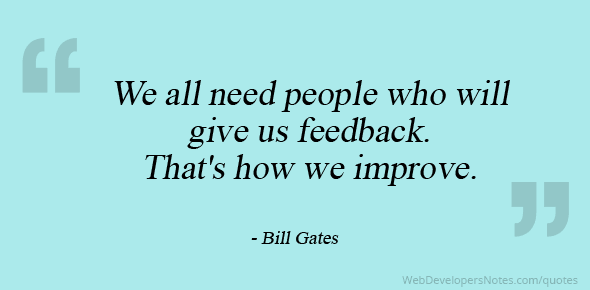There are many benefits to using rubrics for both instructors and students, as discussed in Rubrics Markers of Quality Part 1 – Unlock the Benefits. Effective rubrics serve as a tool to foster excellence in teaching and learning, so let’s take a look at some best practices and tips to get you started.
Best Practices
Alignment
Rubrics should articulate a clear connection between how students demonstrate learning and the (CLO) Course Learning Outcomes. Solely scoring gateway criteria, the minimum expectations for a task, (e.g., word count, number of discussion responses) can be alluring. Consider a rubric design to move past minimum expectations and assess what students should be able to do after completing a task.
Detailed, Measurable, and Observable
Clear and specific rubrics have the potential to communicate to how to demonstrate learning, how performance evaluation measures, and markers of excellence. The details provide students with a tool to self-assess their progress and level up their performance autonomously.
Language Use
Rubrics create the opportunity to foster an inclusive learning environment. Application of clear and consistent language takes into consideration a diverse student composition. Online students hail from around the world and speak various native languages. Learners may interpret the meaning of different words differently. Use simple terms with specific and detailed descriptions. Doing so creates space for students to focus on learning instead of decoding expectations. Additionally, consider the application of parallel language consistently. The use of similar language (e.g. demonstrates, mostly demonstrates, and doesn’t demonstrate) across each criterion can be helpful to differentiate between each performance level.
Tips of the Trade!
Suitability
Consider the instructional aim, learning outcomes, and the purpose of a task when choosing the best rubric for your course.
- Analytic Rubrics: The hallmark design of an analytic rubric evaluates performance criteria separately. Characteristically this rubric’s structure is a grid, and evaluation of performance scores are on a continuum of levels. Analytic rubrics are detailed, specific, measurable, and observable. Therefore, this rubric type is an excellent tool for formative feedback and assessment of learning outcomes.
- Holistic Rubrics: Holistic rubrics evaluate criteria together in one general description for each performance level. Ideally, this rubric design evaluates the overall quality of a task. Consider the application of a holistic rubric can when an exact answer isn’t needed, when deviation or errors are allowed, and for interpretive/exploratory activities.
- General Rubrics: Generalized rubrics can be leveraged to assess multiple tasks that have the same learning outcomes (e.g., reflection paper, journal). Performance dimensions focus solely on outcomes versus discrete task features.
Explicit Expectations
Demystifying expectations can be challenging. Consider articulating performance expectations in the task description before deploying a learning task. Refrain from using rubrics as a standalone vehicle to communicate expectations. Unfortunately, students may miss the rubric all together and fail to meet expectations. Secondly, make the implicit explicit! Be transparent. Provide students with all the information and tools they need to be successful from the outset.
Iterate
A continuous improvement process is a key to developing high-quality assessment rubrics. Consider multiple tests and revisions of the rubric. There are several strategies for testing a rubric. 1) Consider asking students, teaching assistants, or professional colleagues to score a range of work samples with a rubric. 2) Integrate opportunities for students to conduct self-assessments. 3) Consider assessing a task with the same rubric between course sections and academic terms. Reflect on how effectively and accurately the rubric performed, after testing is complete. Revise and redeploy as needed.
Customize
Save some time, and don’t reinvent the wheel. Leverage existing samples and templates. Keep in mind that existing resources weren’t designed with your course in mind. Customization will be needed to ensure the accuracy and effectiveness of the rubric.
Are you interested in learning more about rubrics and how they can enrich your course? Your Instructional Designer can help you craft effective rubrics that will be the best fit for your unique course.
References
- Arcuria, P. & Chaaban, A. (2019, February 8). Best Practices for Designing Effective Rubrics. Retrieved from https://teachonline.asu.edu/2019/02/best-practices-for-designing-effective-rubrics/
- Brookhart, S. M. (2013). How to create and use rubrics for formative assessment and grading. Alexandria, Va.: ASCD. Retrieved from https://search.library.oregonstate.edu/permalink/f/ueodtl/CP71244562880001451
- Creating and Using Rubrics | Poorvu Center for Teaching and Learning. (n.d.). Retrieved from https://poorvucenter.yale.edu/Rubrics
- Heidi Goodrich Andrade. (2000). Using rubrics to promote thinking and learning. Educational Leadership, 57(5), 13–18. Retrieved from http://search.proquest.com/docview/224848134/
- Richter, D., & Ehlers, Ulf-Daniel. (2013). Open Learning Cultures: A Guide to Quality, Evaluation, and Assessment for Future Learning. (1st ed.). Berlin, Heidelberg: Springer. Retrieved from https://search.library.oregonstate.edu/permalink/f/ueodtl/CP99448670001865
- Stevens, D. D., & Levi, Antonia. (2013). Introduction to rubrics: an assessment tool to save grading time, convey effective feedback, and promote student learning (2nd ed.). Sterling, Va.: Stylus.
- Walvoord, B. E. F., & Anderson, Virginia Johnson. (2010). Effective grading: a tool for learning and assessment in college (Second edition.). San Francisco, CA: Jossey-Bass. Retrieved from https://search.library.oregonstate.edu/permalink/f/ueodtl/CP51230795560001451
Additional Resources
The Basics
- Grading Rubrics (n.d.). Berkeley University of California GSI Teaching & Resource Center
- Rubrics (n.d.). Teaching Commons DePaul University
Best Practices
- Arcuria, P. & Chaaban, M. (2019, February 8). Best Practices for Designing Effective Rubrics. Retrieved from Arizona State University TeachOnline
Creating and Designing Rubrics
- Creating & Designing Rubrics Creating and Using Rubrics (n.d.). Eberly Center Carnegie Mellon University
- DePaul Teaching Commons. (n.d.). Designing Rubrics Workshop
- O’Reilly, L., & Cyr, T. (2006). Creating a Rubric: An Online Tutorial for Faculty. Retrieved from University of Denver Center for Faculty Development

